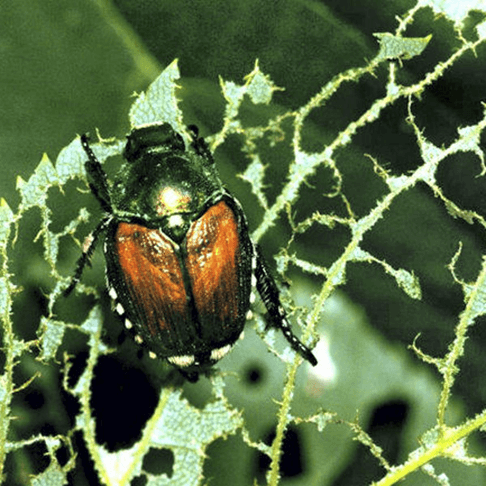Plant Health Care Update
Azalea Lace Bugs

In our area, May is the general time that we find active Lace Bugs on Azaleas and Rhododendrons.
Spring is a great time to apply a systemic soil drench for the plants, which acts as a preventative. Lace Bug damage appears as discolored, pale leaves that eventually fall off as the insects feed on the juices of the leaves. You can find active insect on the undersides of the leaves. When active insects are found, we can spray directly with a contact insecticide.
Needle Cast Disease

Rhizosphaera Needle Cast disease is a fungal disease that attacks Blue Spruces in our area. You’ll notice the disease starts from the bottom and works its way up the tree as it turns needles brown then eventually fall off.
Our treatment recommendation is to determine the investment you want to put into the tree. It takes a series of 3 fungicide sprays every year as a preventative. We cannot undo any damage that has been done, but our goal is to protect the new growth from becoming diseased.
Alternatively, we can discuss removing your Blue Spruce and replacing it with something better suited for our area.
Bagworms

Bagworms generally emerge in late May-early June in our area. Baby Bagworms emerge from last year’s bags, about the size of a pencil point. As they feed throughout the season, they grow and add to their protective bags to grow with them. Early detection is key in preventing severe damage to your trees.
It’s important to note that just because your trees have been treated for bagworms in previous years does not mean you are in the clear this year. Bagworms can be carried by wind to your trees from neighboring properties.
These pests are most damaging to evergreens and some of their favorite species include Arborvitaes, Spruces, Pines, Cedars, etc.
Japanese Beetles

I think it is safe to say that most of us are very familiar with these iridescent beetles that feed on so many of our beloved landscape plants. Early to mid-June is when we start seeing these pests active in our area. A soil drench can be done in spring to help prevent damage. Otherwise, we can apply a contact insecticide spray when we find them active on your plants.
Japanese Maple Scale

JMS has been a growing problem in our area. Without a trained eye, this pest looks like part of the bark but are actually tiny, sap-sucking insects. They have multiple generations per year, making them hard to control. Don’t let the name fool you, these insects will feed on more than just Japanese Maples. They also enjoy Red Maples, Dogwoods, Witch Hazel, Redbuds, Elms, and many others.
Our treatment protocol consists of two dormant oil sprays (March and November) and a systemic insecticide in the spring. It may take a few seasons to clear up this pest.
Our Plant Health Care team consists of professionals who have years of experience identifying your trees and knowing the potential insects and diseases they are susceptible to. There is no ‘one size fits all’ plan. Each Plant Health Care plan is specific to the trees and shrubs on your property and their needs. We promise to never apply more product into the environment than necessary for the health and well-being of your plants. When in doubt, hire an arborist to look at your trees and shrubs to determine the best plan of action to care for them.

